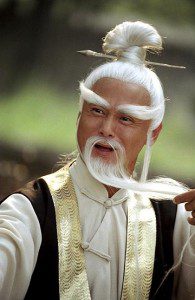CBT vs. DBT vs. Psychodynamic Therapy vs. MI vs. etc.


A similar battle is happening within the field of psychology except the sparring is done with words rather than fists. Although the debate rarely reaches the level of insult hurling we saw with the Shaolin monks, there exists a priggish attitude about which treatment modality is best. Instead of “Your mantis-style will never defeat my tiger-style,” we might hear “My CBT approach is more effective than your Psychodynamic approach.” And science supports these claims, as the advocates will readily explain.
The three hottest words in the addiction treatment field are evidence-based therapy. However, the field of research that supports particular treatment modalities for determining successful outcomes needs to be deepened. There is a human element present that has not been successfully captured. For instance, I feel we should not compare Therapy A with Therapy B for treating a mental illness as if comparing the efficacy of two chemotherapy protocols. The therapy one receives within a specific modality is highly variant, and dependent upon the practitioner as well as the practitioner-patient relationship. In other words, perhaps Tiger-style is the superior Kung Fu, but maybe the martial artist has only been practicing it for a year. Or perhaps he has terrible hand-eye coordination. In that case, I might put my money on the Mantis-style fighter, especially if he has been training for decades and has a proven record.
In current standing, there is a proliferation of private mental health facilities that charge large sums of money and tout evidence-based treatments as their therapeutic model. However, among these centers, there exists a vast discrepancy in quality, one that is almost invariably linked to the relational skills of the individual clinicians. I’d rather hear a marketing representative from a facility spend his or her time describing the type of clinicians they hire, than what their theoretical orientation is. I have seen over and over that the best facilities have the best people. Or more plainly stated for emphasis, a facility is only as good as the people who work there. No place has a unique algorithm for getting people clean and sober. The closest I have seen to such a thing is a facility with prudent hiring practices. And by prudent, I mean a strong emphasis on the relational-skills of incoming employees, not necessarily on what letters they have after their name.

